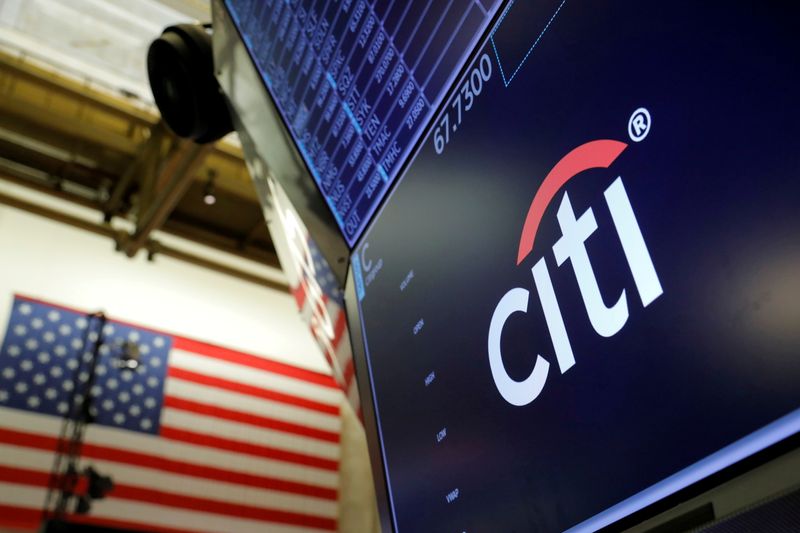By David Henry and Anirban Sen
(Reuters) -Citigroup Inc, like its Wall Street peers, made the best of a boom in dealmaking to post strong quarterly profit on Thursday, fending off a weakness in its lending business, which the bank's management said would continue to be under pressure.
A sizzling hot stock market and cheap borrowing costs have helped U.S. companies raise billions of dollars in debt and equity and funnel a big share of it into deals, for which they used large investment banks for advice.
The torrid pace of dealmaking boosted investment banking fees to an all-time record in the first nine months of the year, with banks like JPMorgan Chase (NYSE:JPM), Citi and Morgan Stanley (NYSE:MS) benefiting the most.
"It was Citi's best M&A quarter and the second best investment banking quarter in a decade," Chief Executive Jane Fraser said on a post-earnings conference call with analysts.
The bank's investment banking revenue jumped 39% to $1.9 billion, helping offset a 16% decline in fixed-income revenue from a year earlier when there was unprecedented market volatility.
Its profit got a big boost by the decision to ease $1.16 billion from its loan loss reserves. A year earlier it had added $436 million to the reserves to survive a potential impact from the pandemic.
JPMorgan, Bank of America (NYSE:BAC) and Wells Fargo (NYSE:WFC) have also released funds.
SLUGGISH LOAN BOOK
The reserve release along with a surge in deals helped Citi offset declines at its consumer bank due to lower interest income as customers saved up on cash during lockdowns and paid off loans. Net interest revenue declined 1% from a year earlier.
Executives said on Thursday that the bank had struggled to grow its lending business, even though consumer spending picked up during the quarter.
"Healthy consumer balance sheets and persistently elevated payment rates did mean that loan growth remained under pressure," CEO Fraser said.
However, the silver lining is that net interest revenue was 2% more than the second quarter, suggesting an end to the downward trend that started when the pandemic began and the Federal Reserve cut interest rates to near zero.
Lower rates also hurt Citi's treasury and trade solutions business as revenue decline 4% even as it collected more fees and saw growth in trade loans.
Revenue from its branded cards in North America declined 1%. But on a positive note, cards purchase sales rose as consumer spending picked up. Spending for North America branded cards jumped 24% from last year.
Executives at other big U.S. banks have also said that consumers have started to show signs of taking on more debt as their cash balances diminish.
The results included the impact of a loss on the sale of its Australia consumer banking business. Excluding that, overall revenue increased 3%, driven by the institutional business.
EXPENSES RISE
For the three months ended Sept. 30, net income jumped 48% to $4.6 billion, or $2.15 per share, from a year earlier. Analysts were expecting a profit of $1.65 per share, according to Refinitiv data.
Operating expenses rose 5% to $11.5 billion as the bank spent more on technology and personnel to improve its control systems and comply with demands made by regulators a year ago.

Investors have been particularly concerned about Citi's expenses as it has not disclosed how much money and time it will take to meet the requirements of regulators and fix its systems.
Expenses for marketing credit cards have also been rising. Rival card-issuer JPMorgan said on Wednesday it could spend more on card marketing to attract spending from customers as the pandemic eases.